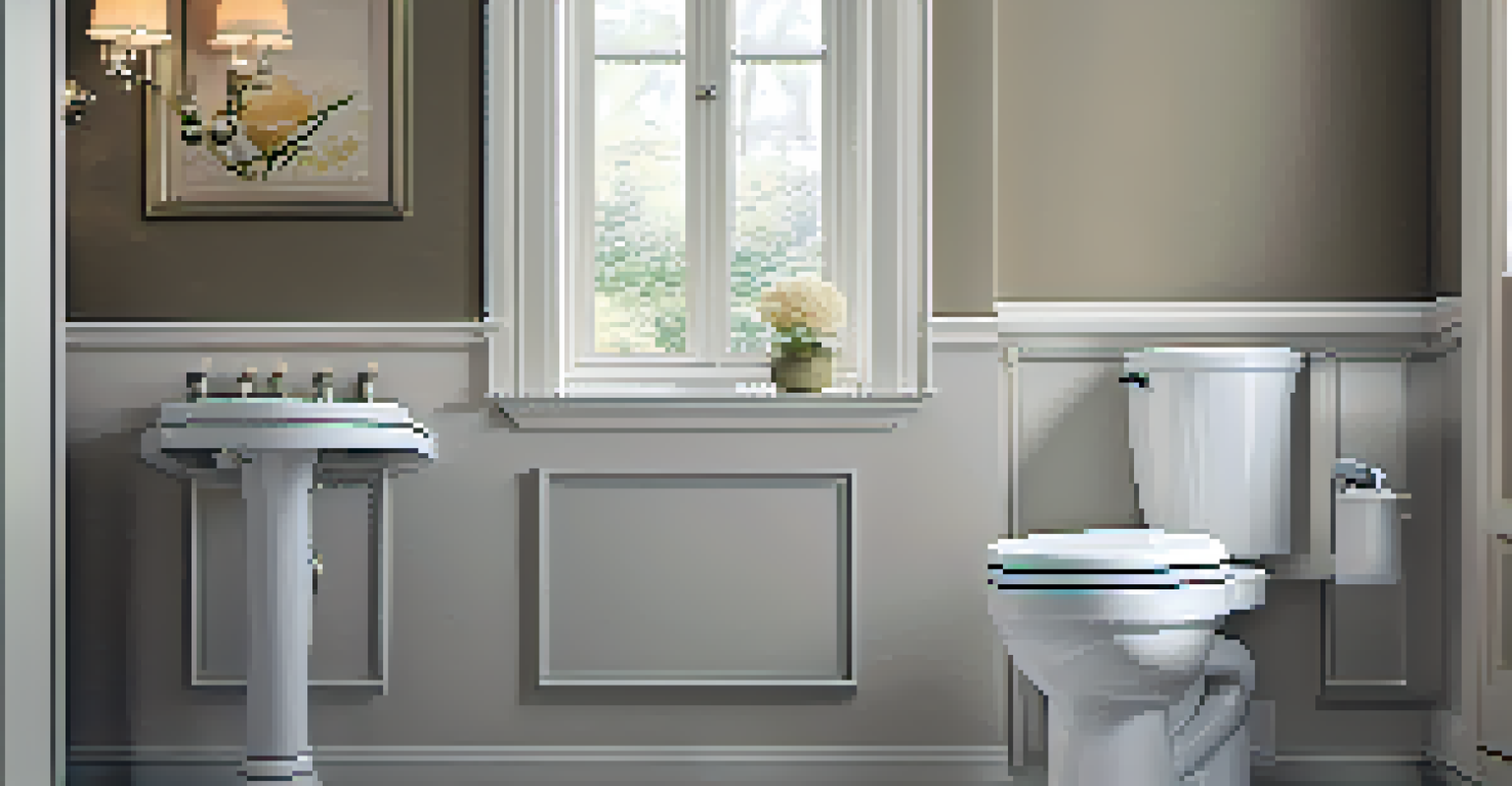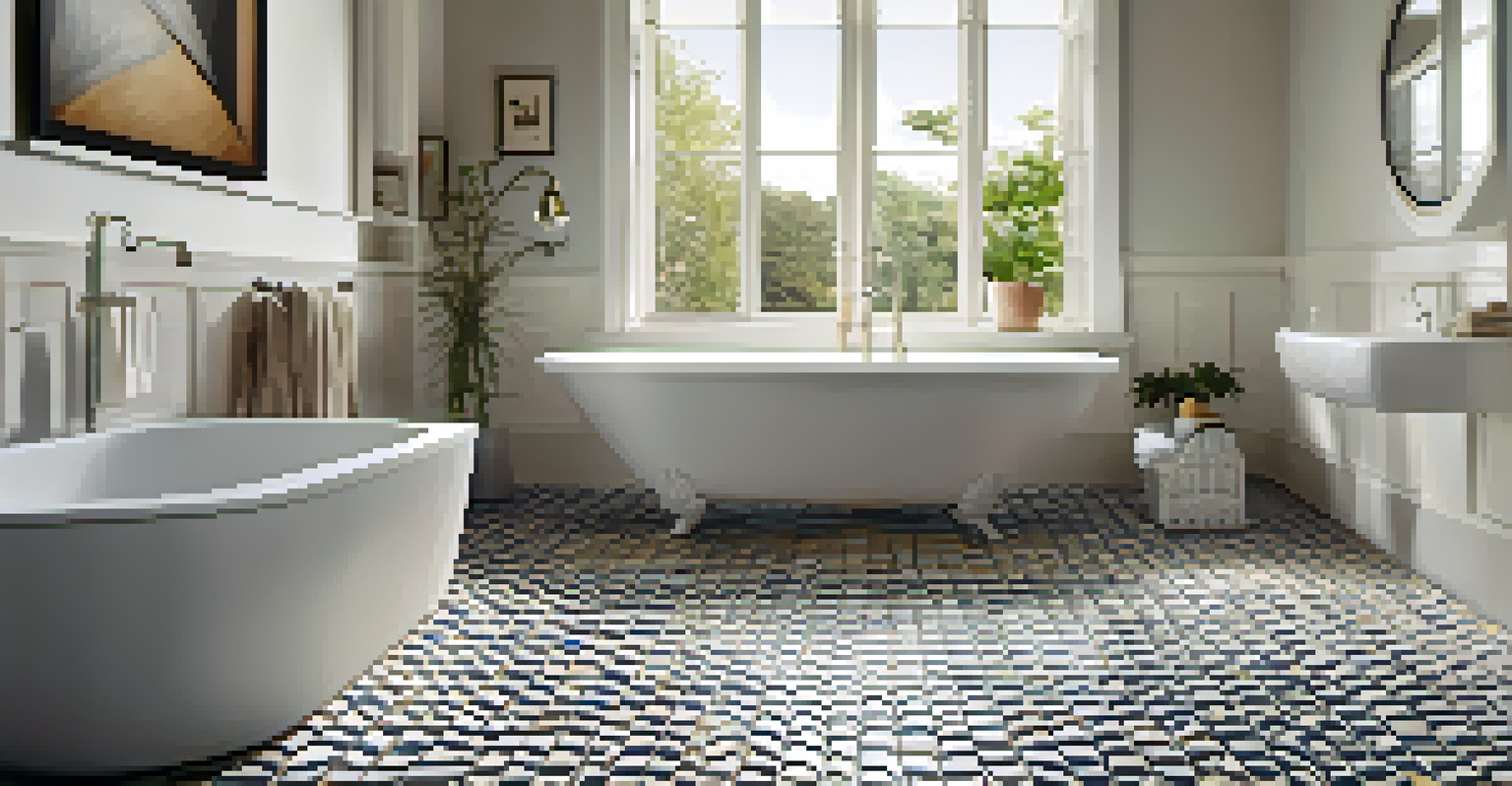Top 10 Bathroom Modifications for Improved Accessibility

Install Grab Bars for Safety and Support
Grab bars are a simple yet effective modification that can greatly enhance safety in the bathroom. They provide essential support for individuals when entering or exiting the shower or bathtub, reducing the risk of slips and falls. When installed at strategic locations, grab bars can offer peace of mind to users, especially the elderly or those with mobility issues.
Safety isn't expensive, it's priceless.
Choose grab bars that are sturdy and made from materials that can withstand moisture. Ideally, they should be installed at a height that is comfortable for the user. It's important to ensure that these bars are securely anchored to the wall, so they can bear weight when needed.
Additionally, grab bars come in various designs and finishes, allowing you to choose options that complement your bathroom's aesthetic. This means you don't have to sacrifice style for safety; you can have both!
Opt for a Walk-In Shower for Easier Access
If you're looking to make significant changes, consider replacing your traditional bathtub with a walk-in shower. This modification eliminates the need to step over a high tub wall, making bathing more accessible for individuals with mobility challenges. Walk-in showers can also provide a more spacious feel to the bathroom, which is an added bonus.

These showers can be designed with minimal thresholds or even be curbless, further enhancing accessibility. Incorporating a shower seat inside the walk-in shower allows users to sit comfortably while bathing, adding another layer of convenience.
Enhance Safety with Grab Bars
Installing grab bars in strategic locations can significantly reduce the risk of slips and falls, providing crucial support for users.
Moreover, you can customize the shower with handheld showerheads and adjustable bars, making it easier for users to wash themselves without straining. This thoughtful design can transform daily routines into enjoyable experiences.
Upgrade to a Comfort Height Toilet
Toilets may seem like a minor detail, but switching to a comfort height toilet can make a world of difference. These toilets are typically 2-4 inches taller than standard models, making it easier for individuals to sit down and stand up. This small change can significantly reduce strain on the knees and back.
The best way to predict the future is to create it.
When selecting a comfort height toilet, look for models with an elongated bowl, as they provide additional support and comfort. Installing a toilet with a higher seat height is especially beneficial for older adults or those recovering from surgery.
Don't forget about the importance of accessibility features. Adding grab bars near the toilet can further enhance safety, allowing users to stabilize themselves when transitioning to and from the seat.
Incorporate Non-Slip Flooring for Safety
Slips and falls are common hazards in bathrooms, making non-slip flooring an essential modification. Choosing materials with textured surfaces can provide the grip needed, especially when the floor is wet. Options like vinyl, tiles with a high coefficient of friction, or rubber flooring can be both practical and stylish.
While selecting flooring, consider how easy it is to clean and maintain. Non-slip surfaces can be a bit more challenging to keep clean, so opting for materials that don’t trap dirt and grime can save time and effort in the long run.
Opt for Walk-In Showers
Replacing traditional bathtubs with walk-in showers improves accessibility and offers a more spacious feel in the bathroom.
Additionally, using contrasting colors for floor tiles can help visually guide individuals, especially those with visual impairments, making transitions clearer and safer.
Add Lighting Features for Better Visibility
Good lighting is crucial in any bathroom, particularly for those with visual impairments or mobility challenges. Bright, even lighting can help users navigate the space safely and perform tasks like grooming or medication management. Consider installing LED fixtures, which provide excellent illumination and are energy-efficient.
Incorporating task lighting around mirrors and sinks can enhance visibility where it’s needed most. Dimmers can also be a great addition, allowing users to adjust light levels according to their comfort.
Don't forget about nightlights! Installing motion-sensor nightlights can help guide individuals safely to the bathroom during the night, minimizing the risk of accidents.
Consider Vanity Height Adjustments
The height of your bathroom vanity can significantly impact accessibility. Modifying the vanity to an appropriate height can make it easier for individuals who use wheelchairs or those who may have difficulty bending. A height-adjustable vanity is a fantastic option, especially for families with diverse needs.
When designing your vanity space, ensure there’s enough clearance underneath for wheelchair access. This thoughtful design allows users to get closer to the sink and other bathroom fixtures comfortably.
Upgrade to Comfort Height Toilets
Switching to comfort height toilets makes sitting down and standing up easier, reducing strain on the knees and back.
Furthermore, choosing lever-style faucets can be a user-friendly addition, as they require less strength to operate compared to traditional knobs.
Install a Shower Bench for Added Convenience
A shower bench is not just a luxurious addition; it's a practical solution for enhancing bathroom accessibility. These benches allow users to sit while showering, which can be incredibly beneficial for those with limited mobility. They provide a safe place to rest and can also be a convenient spot for holding toiletries.
When selecting a shower bench, consider materials that are water-resistant and easy to clean. Foldable benches are a great space-saving option, while permanent benches can offer sturdiness and durability.

Adding grab bars near the bench can enhance safety further, allowing users to transition smoothly between sitting and standing.
Implement Smart Technology for Enhanced Usability
In our tech-driven world, incorporating smart technology into your bathroom can provide added convenience and accessibility. Smart toilets, faucets, and showers can be controlled with a simple voice command or smartphone app, making them ideal for individuals with limited mobility.
For example, smart toilets can offer features like heated seats, automatic lid opening, and self-cleaning functions. Such innovations can enhance comfort and hygiene, making the bathroom experience more enjoyable.
Additionally, smart lighting systems can be programmed to adjust according to individual preferences, ensuring the perfect ambiance at all times. These technological advancements can empower users while ensuring their safety and comfort.